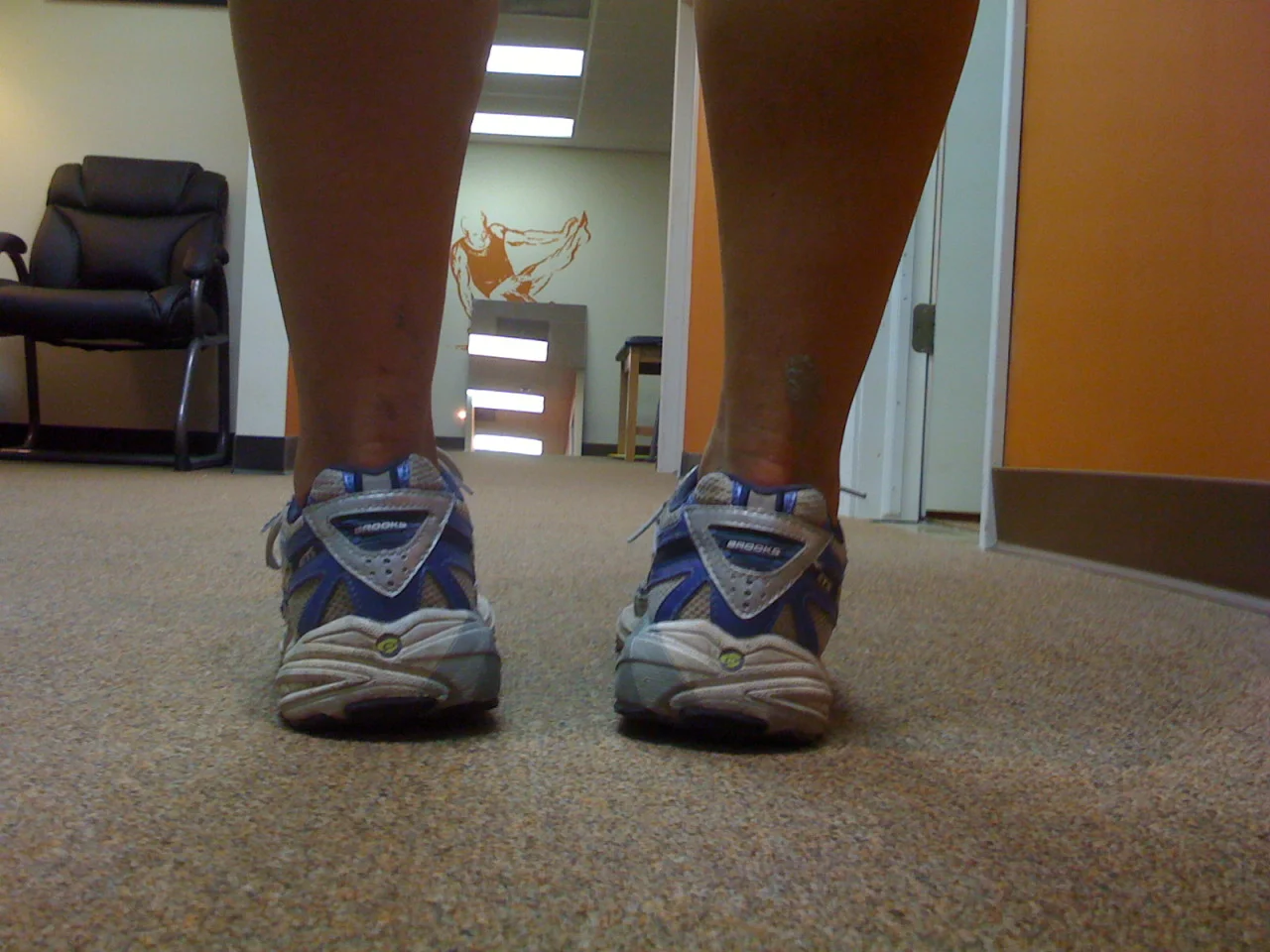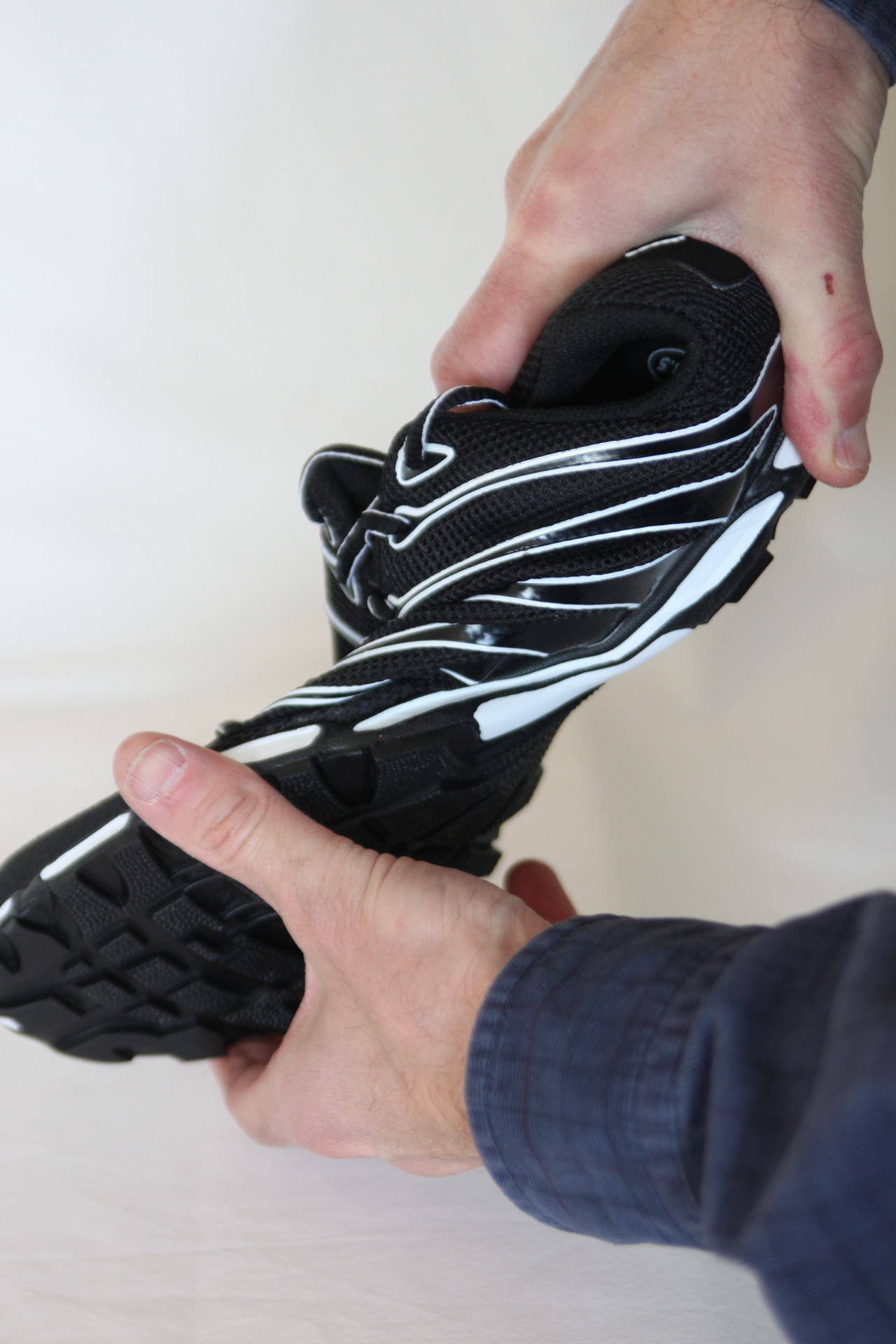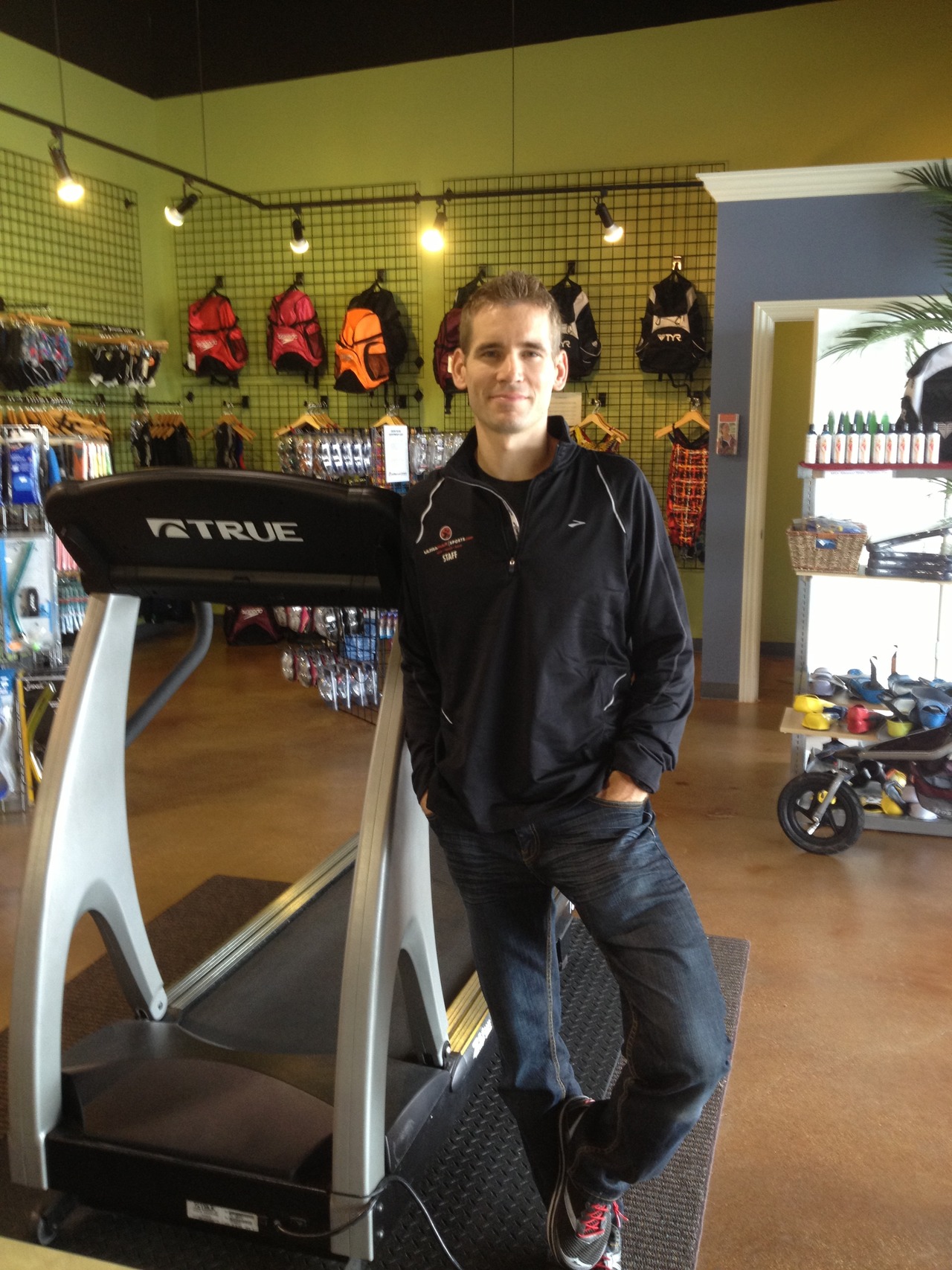Hip Biomechanics: Part 6 of 6, The Conclusion (for now)
A Piece of the Functional Puzzle: Hip Rotation
As we have already mentioned, stabilization of the hip is complicated in its own right, but when we ask it to participate in balanced single limb movement and stability in the frontal/coronal, sagittal and axial planes all at once, the delicate balancing act of of these components is sheer genius.
Through our collective clinical experiences it has become apparent over time that vertical and horizontal gravity dependent postural examination can open insight into a deeper functional disturbance in patients. For example, an externally rotated right lower limb as evidenced by an accentuated external foot flare should initiate the thought process that there is either an anatomically short right limb (external rotation increases leg length), tight right posterior hip capsule, short gluteals or other posterior hip musculature (piriformis, obterators, gemelli), weak internal hip rotators, weak stabilizers of this internal hip rotation, or possibly an over-pronating right foot which shortens the limb and hence the need for the externally rotated and lengthened right limb (ie. failed compensattion). What we mean by this last component is that there are really two basic types of presentations, those that are compensations to an underlying problem and those that are failed compensations. In consideration of all scenarios, our traditional thinking has directed us to believe we are dealing with a limb posture that has occurred to lengthen the limb in question. However, perhaps the compensation is deeper in its root cause. For example, the traditional thinking in alignment restoration of this postural deviation is to stretch the piriformis, glutes and iliopsoas and perform deep soft tissue work such as myofascial release methods, stripping, post-isometric release and mobilization or manipulation to the affected tissues and associated joints to ensure normal function. These efforts are meant to restore the limbs rotational anomaly and hopefully the cause of the leg length compensation. However, many clinicians will attest to the fact that these methods are frequently unsuccessful or at least limited in their short or long term effectiveness towards complete symptom and postural deficit resolution. Frequently our patients enter into the cyclical office visits several times a year to address symptoms associated with the root cause. Thus, we must delve deeper into the source of the problem, perhaps those above methods are focused at resolving the neuroprotective compensation and not the lack of strength or stability of internal hip rotation. This approach will require the therapist to investigate the open and closed kinetic chain functions of these external and internal hip rotators and look further and more deeply for the source.
In the open kinetic chain (swing phase of gait) the primary and secondary external rotators turn the lower limb outwards in relation to a fixed pelvis established by a sound core; this is late swing phase. This external rotation is, at this point, largely assistive in driving foot supination to gain a rigid foot lever to toe off from. In the closed kinetic chain scenario, with the foot engaged with the ground, the activation of these same muscles will cause the same movement at the hip-pelvis interface but in this case the pelvis/torso will rotate. For example, in observance of a closed chain right lower limb, upon activation of the glutes, piriformis and accessory external hip rotators the client’s pelvis and thus torso will rotate to the left (counterclockwise rotation) along the vertical body axis about the fixed right limb. With this functional thinking we must now embrace the fact that our traditional perspectives of body function assessment in the frontal and sagittal planes must be largely discarded. It is a rare occurrence that we move in a single plane of motion without any component of rotation. This being accepted, we must return to our client’s left pelvis rotation and understand that torso rotation must occur in the opposite direction if gait is to be normal with proper arm swing and propulsion. This rotation can occur from activation of not only component muscles at the hip-pelvis interval but also from the abdominal obliques, thoracic spine and rib cage. Therefore, one could hypothesize that a client’s external rotation of the right lower limb in stance or gait might not be a primary problem with the piriformis, glutes or accessory muscles rather it could be a compensation for either a one sided over-active or weak abdominal oblique system/sling/chain or abnormal thoracic rotation, or a combination of both. Assessment of a patient’s passive and active torso and thoracic/rib rotation might open a window into one of a range-driven deficit or weakness/inhibition. Shoulder mobility assessment is going to be necessary as well because it can and will effect torso/rib cage mobility, arm swing is a huge predictor and indicator in faulty gait assessment and it is one frequently overlooked (type in “arm swing” into our blog SEARCH box and you will be excited to read the research on arm swing in gait). The practitioner must always embrace the thought that the client’s core might not only present as weak but to a higher level that of imbalanced, which is a combination of weakness, stretch weakness, strength, over-activation, inhibition and impaired movement patterns (including breathing). This imbalance can come from such parameters as pain, handed dominance activities, lower limb dominance issues, occupational demands or others as discussed below.
What we continue to find as our clinical experiences expand is that many deficits in the body are driven by a functional core weakness/imbalance or forces not dampened across a weak core and from impaired gait biomechanics. In this case, the absence of balanced core abdominal strength and torso rotation renders a weaker or inhibited core rotation/lateral bend on one side and it is this deficit that is often compensated in the pelvis as a tight hip/pelvis soft tissues unilaterally (expressed perhaps as the unilateral externally rotated limb). This will often alter function, strength and mobility in single leg stance during the gait cycle and enable a compensatory cheat into one or several of the cardinal planes of motion. This is of course but just one scenario. Taking the example above, a right externally rotated lower limb with associated tight and/or painful right piriformis muscle, we frequently (but yes, not always) see a loss of rotation range or strength into left torso rotation. This can be seen on supine rolling patterns looking for upper or lower limb driver deficits. This scenario might be showing little to no progress with therapy but may do so with focused work on supine rolling patterns. Therapeutically facilitating oblique abdominal strength to improve range and strength into left thoracic/rib cage rotation over time may reflexively reduce the piriformis spasm and rotational deficit in the right lower limb without even applying much direct therapy to this area. In other words, our experience shows that improving the thoracic rotation into the side of limitation can have some neurologic response of inhibition/relaxation on the tight posterior hip compartment. We would be remiss if we were to neglect that this oblique abdominal weakness could coincide with a slight anterior pelvic tilt in the sagittal plane on that side (which promotes weakness of the internal hip rotators since the lower abdominals help anchor them). We would see a slight bellowing of the left abdominal group and a slight increased anterior pelvic tilt on the same side. This asymmetrical pelvis posture would load the superior aspect of the right piriformis and force it into spasm due to the sustained pelvic obliquity and slight drop in the anterior direction. This spasm can inhibit the gluteal group and further complicate the problem. Keep in mind that a weak left oblique abdominal system would facilitate a tendency towards a sway back position, stretch weak left iliopsoas, and the anterior femoral glide syndrome of the hip (not to mention weak internal hip rotators). As previously touched upon, activities of daily living such as sleep, stance and sit positions, driving style, handedness, respiration, functional and anatomical leg length differences, unidirectional floor transfers and simply imbalances in the hip rotators can all cause this imbalance and thus piriformis dysfunction. In summary, the key to the body in the above scenario is in its ability to create and control rotation. The ribs, thoracic spine, foot and hips are the most important rotators of the body and their relationship is well established. Even something as simple as respiration mechanics can be dysfunctional as a result of excessive computer use, reading, driving, sedentary lifestyle and sporting history (one sided dominant sports). For these reasons, most individuals will be unable to rotate effectively and without compensation patterns so the rotational deficits frequently are expressed either upwards into the thoracic spine, ribs and shoulders (one way to see these problems is to look at shoulder posture and arm swing during gait) or they are expressed caudally into the pelvis at the hips.
We are sure there is more in us on hip biomechanics but for now this 6 part series will have to suffice. We are putting it aside for now and will move back to some other issues on gait and human movement so we do not get stale. We hope you enjoyed our 6 part series.
Shawn and Ivo (not just your average gait analysis doctors)































